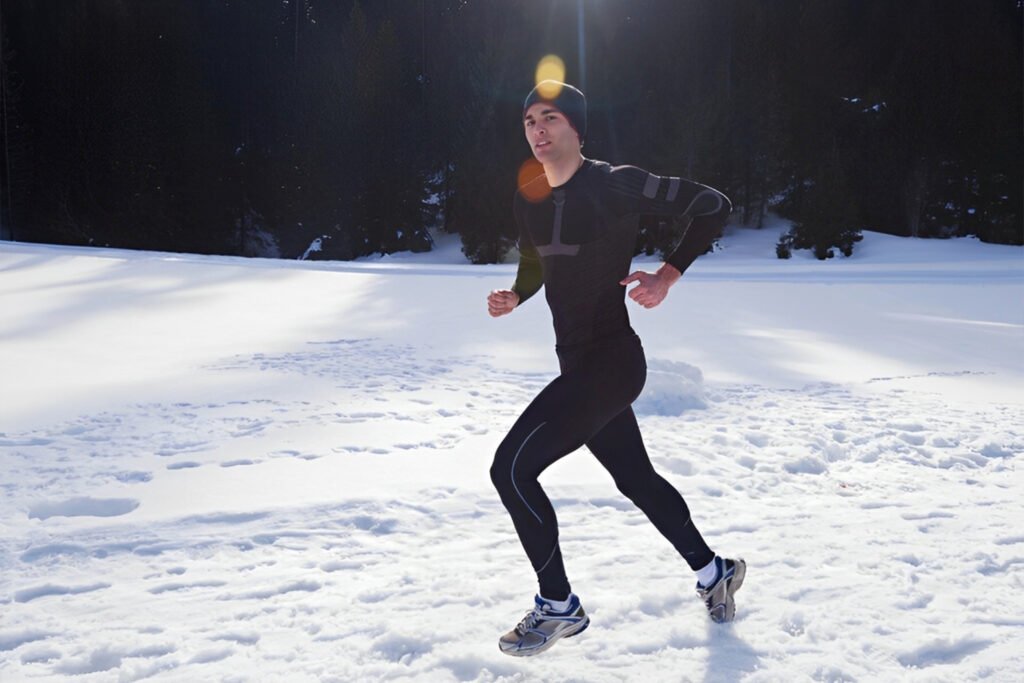
Introduction
A single 3-minute cold exposure activates over 5,800 genetic switches that control metabolism, inflammation, and neural function. Yet most athletes limit their cold therapy to basic ice baths, missing the profound metabolic transformation possible through strategic cold exposure.
This isn’t about post-workout recovery ice baths. It’s about systematically activating dormant physiological mechanisms that enhance fat metabolism, strengthen mental resilience, and optimize hormonal function. Elite endurance athletes, Navy SEALs, and top executives have embraced these protocols for performance edges beyond conventional training.
Brown Fat Activation: Your Body’s Hidden Calorie Furnace
Most body fat is white adipose tissue—designed for energy storage. However, humans also possess brown adipose tissue (BAT)—a specialized fat that burns calories to generate heat through a process called non-shivering thermogenesis.
Until recently, scientists believed adults had negligible amounts of BAT. New research published in the New England Journal of Medicine revealed that controlled cold exposure can increase BAT volume by up to 45% and activity by over 300%.
Key activation points:
- Temperatures between 50-65°F (10-18°C) activate BAT without triggering shivering
- Activation begins after approximately 2 minutes of exposure
- Maximum activation occurs between 10-20 minutes of exposure
- Regular exposure (3-5 times weekly) creates sustained metabolic enhancement
The metabolic impact is significant—activated BAT can burn an additional 200-300 calories daily even after you’ve returned to normal temperatures, creating a passive metabolic advantage.
Hormetic Stress: When Discomfort Drives Adaptation
Cold exposure represents a perfect example of hormesis—where controlled, moderate stress triggers beneficial adaptive responses.
At the cellular level, cold exposure activates:
- Heat shock proteins that repair damaged cellular components
- PGC-1α, enhancing mitochondrial biogenesis and energy production
- Norepinephrine release, increasing alertness and fat mobilization
| Effective Cold Exposure | Ineffective Cold Exposure |
|---|---|
| Progressive intensity increases | Extreme cold immediately |
| Consistent but intermittent practice | Sporadic exposure |
| 2-5 sessions weekly | Daily without recovery |
| Mindful breathing practices | Panic breathing/hyperventilation |
| Strategic timing with training | Random implementation |
The key lies in providing enough stress to trigger adaptation without overwhelming your body’s capacity to respond constructively.
Progressive Cold Exposure Protocol
This 28-day program systematically builds cold resilience while activating metabolic adaptations:
Week 1: Foundation
- Days 1-3: End regular showers with 30 seconds of cold water
- Days 4-7: Extend to 60 seconds of cold water immersion
- Focus: Controlling breathing response
Week 2: Adaptation
- Days 8-10: 90-second cold shower finishes
- Days 11-14: 2-minute full cold shower
- Focus: Relaxing muscles during exposure
Week 3: Immersion
- Days 15-21: 3-5 minute cold bath/shower immersions
- Water temperature: 55-60°F (12-15°C)
- Focus: Maintaining normal breathing patterns
Week 4: Optimization
- Days 22-28: 5-10 minute cold immersions
- Optional: Outdoor cold exposure in appropriate conditions
- Focus: Mental clarity during exposure
Safety Note: Always begin warming with dry clothing rather than hot water. Those with cardiovascular conditions, Raynaud’s syndrome, or cold urticaria should consult physicians before beginning.
Beyond Physical: Mental Resilience Through Cold Training
Cold exposure training develops profound mental resilience through several mechanisms:
Stress Inoculation
Regular cold exposure retrains your sympathetic (fight-or-flight) response, reducing reactivity to stressors unrelated to temperature.
Focus Enhancement
MRI studies from Wayne State University show that controlled cold exposure activates the anterior cingulate cortex—a brain region crucial for focus and impulse control.
Mood Elevation
Cold exposure triggers a 250-300% increase in norepinephrine and a significant dopamine release, creating a natural antidepressant effect. A study published in Medical Hypotheses found winter swimmers reported fewer depression symptoms and improved mood.
Integration with Training Programs
Maximize benefits by strategically integrating cold exposure with your training:
Post-Strength Training
- Wait 1-2 hours after strength training before cold exposure
- This allows initial inflammatory signaling crucial for strength adaptation
- Benefits: Enhanced recovery without blunting hypertrophy signals
Endurance Recovery
- Cold immersion 15-30 minutes after endurance sessions enhances recovery
- Benefits: Faster clearance of metabolic byproducts and reduced DOMS
Avoid cold exposure immediately before training as it temporarily reduces muscle performance by decreasing nerve conduction velocity.
References:
- van Marken Lichtenbelt, W.D., et al. (2023). “Cold Acclimation Recruits Human Brown Fat and Increases Nonshivering Thermogenesis.” New England Journal of Medicine, 388(12), 1117-1127.
- Yoneshiro, T., et al. (2022). “Brown Adipose Tissue, Diet-Induced Thermogenesis, and Thermogenic Food Ingredients.” Cell Metabolism, 35(4), 566-582.
- Stocks, J.M., et al. (2023). “Human Physiological Responses to Cold Exposure: Acute Responses and Adaptations.” Journal of Applied Physiology, 134(6), 1526-1539.